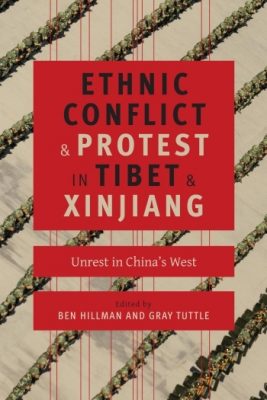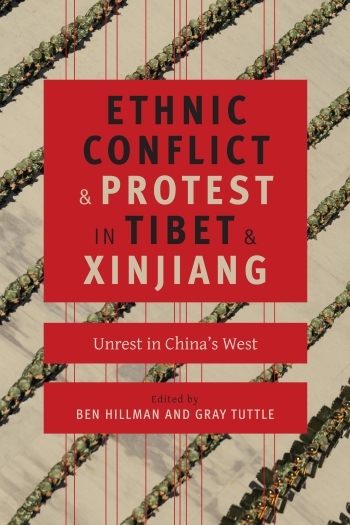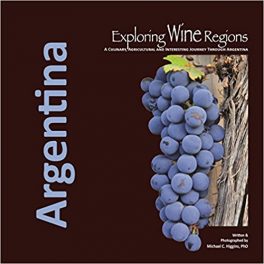 Editors: Bill Hillman and Gary Tuttle
Editors: Bill Hillman and Gary Tuttle
Publisher: Columbia University Press – 268 pages
Book Review by: Sonu Chandiram
Xinjiang is a provincial-level autonomous region of about 640,000 square miles in the western part of China that has common borders with these countries: Mongolia, Russia, Kazakhstan, Kyrgyzstan, Afghanistan, Pakistan, and India. It is home to a large number of ethnic groups including the Hans, Kazakhs, Tajiks, Uyghur, Kyrgyz, Mongols, and Russians. About 24 million people live there.
Tibet is a region of the Tibetan Plateau in Asia spanning about 965,000 miles or about a quarter of the land area of China. About 2.7 million people live in what is called the Tibetan Administrative Region.
These two areas are part of China, a sovereign state in East Asia and the world’s most populous country, with a population of over 1.38 billion. The country is governed by the Communist Party of China and its capital is Beijing. It exercises jurisdiction over 22 provinces, five autonomous regions, and four direct-controlled cities: Beijing, Chongqing, Shanghai , and Tianjin.
China also has two mostly self-governing special administrative regions: Hong Kong and Macau, and claims sovereignty over Taiwan. Besides the metro areas named above, the country’s major urban areas include Guangzhou, Hong Kong, and Shenzhen. China is a great world power and a major regional power within Asia, and has been characterized as a potential superpower.
This book is focused on the conflicts within China among people living in Xinjiang and Tibet, and various issues and topics are discussed by the eleven people including the two editors named above. We present the titles of its nine chapters below to provide you with an overview:
- Introduction: Understanding the Current Wave of Conflict and Protest in Tibet and Xinjiang
- Unrest in Tibet and the Limits of Regional Autonomy
- Propaganda in the Public Square: Communicating State Directives on Religion and Ethnicity to the Uyghurs and Tibetans in Western China.
- Discussing Rights and Tibetan Rights in Tibet
- The Chinese Education System As a Source of Conflict in Tibetan Areas
- Lucrative Chaos: Interethnic Conflict As a Function of the Economic “Normalization” of Southern Xinjiang
- Environmental Issues and Conflict in Tibet
- Fringe Existence: Uyghur Entrepreneurs and Ethic Relations in Urban Xinjiang
- Prosperity, Identity, Intra-Tibetan Violence and Harmony in Southeast Tibet: The Case of Gyalthang
- Interethnic Conflict in the PRC: Xinjiang and Tibet as Exceptions?
The Introduction to this book relates that in the spring of 2008, the Tibetan Plateau erupted in protest. It began when a group of Tibetan monks, nuns, and others demonstrated for the release of clergy who had been arrested and held for over a year by Chinese police. Over two days, thousands of people railed against Chinese government policies.
The protests turned into riots, and some called for independence from Chinese government control. The rioters attacked government offices, police stations and vehicles. The attacks led to the deaths of 18 civilians and destructions of hundreds of small businesses.
“Parts of Lhasa became like a war zone as the People’s Armed Police responded with tear gas and gunfire. The protests spread to ethnic Tibetan areas in Qinhai, Gansu and Sichuan provinces. An estimated two hundred people died, and two thousand or more were arrested in more than one hundred “mass incidents” across the region in what quickly became the most widespread protest in Tibet since the founding of the People’s Republic of China, writes editor Bill Hillman
The authors, including the editors, trace the causes of these riots, and other the relevant historical events and causes of conflict and protest, including the Chinese educational system, environmental issues, ethnic differences, expectations and denials of prosperity, fringe existence, human rights violations, identity, propaganda of the Chinese government, and other problems.
This is an important and highly useful book because some of the writers were able to go into the field to get the facts and the truth about existing conditions, which is typically denied access to, by Chinese government leaders. It is valuable also because the authors’ backgrounds, insight, and understanding about China enabled them to make an informed analysis on the ethnic conflicts.
Editors:
Bill Hillman is senior lecturer in comparative politics at the Crawford School of public policy at the Research School of Asia and the Pacific at the Australian National University. He has published widely on Chinese politics and ethnic politics in Asia. He has also worked as an adviser to the United Nations on post-conflict governance and the incorporation of minority groups in political processes.
Gary Tuttle is the Leila Hadley Luce Associate Professor of Modern Tibetan Studies in the Department of East Asian Languages and Cultures at Columbia University and serves on the executive committee of Columbia’s Center for the Study of Ethnicity and Race. His Columbia University books include The Tibetan History Reader (2013), Sources of Tibetan Tradition (2012) and Tibetan Buddhists in the Making of Modern China (2005).
Contributors:
Thomas Cliff – is an ARC Laureate Postdoctoral Fellow in the School of Culture, History, and Languages at the Australian National University. He has conducted long-term fieldwork in Xinjiang.
Tyler Harlan – is a PhD candidate in the Department of Geography at the University of California, Los Angeles.
Clemence Henry – is a graduate student at the National Institute of Oriental Languages and Civilizations (INALCO) in Paris. Based on fieldwork, her research focuses on the Chinese educational system in Tibetan areas.
Bill Hillman – teaches comparative politics and government at the Australian National University.
James Leibold – is a senior lecturer in politics and Asian Studies at La Trobe University in Melbourne, Australia.
Eric D. Mortensen – is an associate professor of religious studies and is chair of the Department of Religious Studies at Guilford College.
Yonten Nyima – conducts research in pastoral areas of Tibet and China.
Francoise Robin – is the head of Tibetan Studies at INALCO, Paris where she teaches Tibetan language and literature.
Antonio Terrone – is a lecturer for the Department of Religious Studies at Northwestern University in Evanston, Illinois.
Gary Tuttle – is the Leila Hadley Luce Associate Professor of Modern Tibetan Studies in the Department of East Asian Languages and Cultures at Columbia University.
Emily T. Yeh – is an associate professor of geography at the University of Colorado, Boulder.







